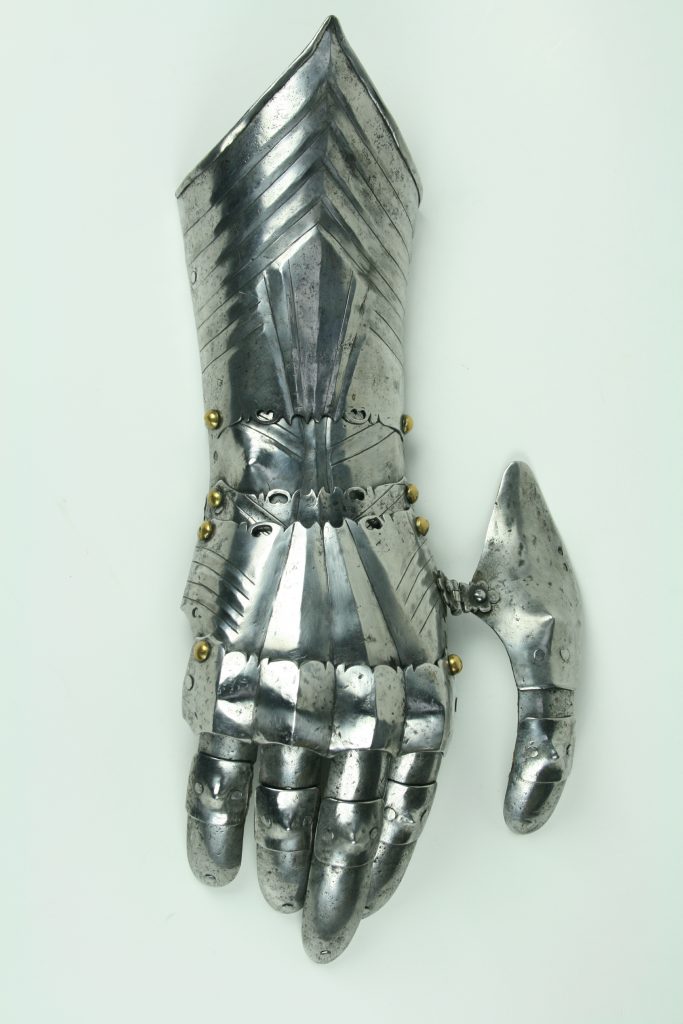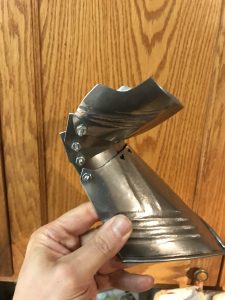Medieval gauntlet fingertips were often much less shaped than we expect, and many gothic gauntlets did not even have fingertips – check out this one from Wade Allen’s collection, noting these have no actual fingertips, and also do not have any coverage for the second finger joints.

While the ends appear to be domed, other photos from the side (click the gauntlet above to go to the page for the gauntlet) show that these are almost flat. Some gauntlets have considerably more shape to the fingertips, and many of these have chased and embossed fingernails. Since I am making gauntlets which are often used in combat, having protective fingertips is a definite advantage. This post details how I make finger (and thumb) tips. The major difference is that thumb tips use a larger plate, and slightly different tooling. My default finger tip plate used to be 1 1/2″ x 2″ which is now the size that I use for thumbtips, and are currently 1 1/4″ x 1 1/2″. The difference in size is important, since these are ground to shape once they are formed, and minimizing the amount of “extra” grinding saves a lot of time.
Continue reading Gauntlet Fingertips
